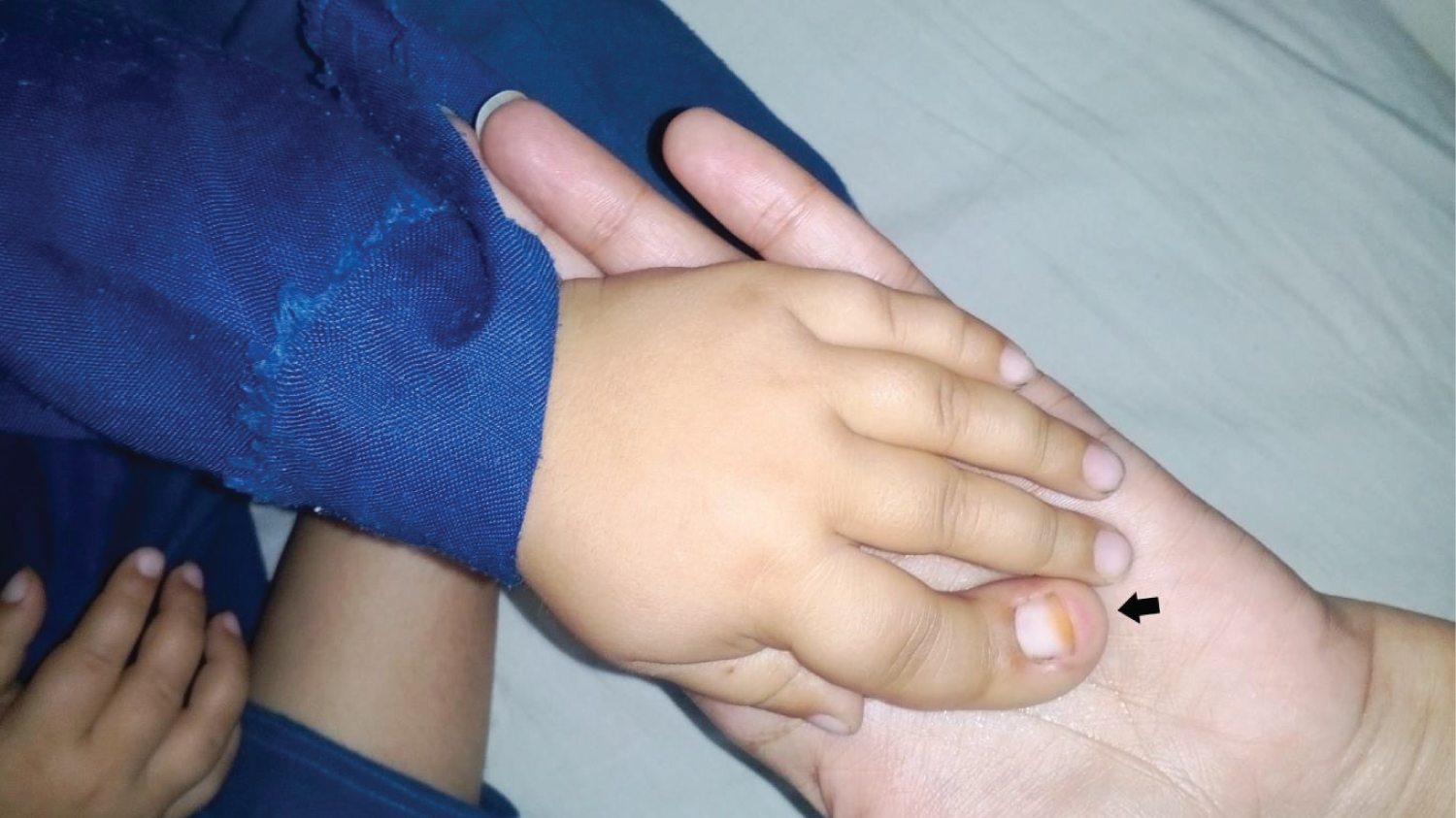A 5-year-old boy was brought to the outpatient department by his parents with complaints of the enlarged index finger of the left hand since birth. According to the mother, at birth, the index finger of the left hand was larger and longer than the other fingers of the same hand. The index finger grew out of proportion since then. The parents gave no history of congenital anomalies, limb defects, overgrowth syndromes, or similar complaints in any of their family members. On general physical examination, the patient was healthy, well-nourished, and developmentally appropriate to his age. A review of the systems was unremarkable. No other defects were noted on the examination. Both the lower extremities and the right hand had normal digits. Local examination of the left hand showed a diffusely hypertrophied index finger with a slight curvature and an enlarged nail bed. The distal phalanx of the affected finger could be abnormally hyper extended without eliciting pain. There was no associated syndactyly. The rest of the fingers of the left hand had normal shape and function. Laboratory results were normal. The hand radiographs revealed abnormalities of both the bone and the soft tissues along with distal angled phalanx. A diagnosis of isolated macrodactyly was made. The patient underwent surgical debulking and terminalization. The surgery went uneventful. There were no complications during the post-operative period, and the patient was discharged. After that, the patient lost to follow-up (Figure 1).
Macrodactyly is an extremely rare congenital anomaly that may either be isolated or as a part of other syndromes. It is imperative to rule out associated syndromes, like neurofibrolipoma, angiomatosis, Milroy disease, Klipple-Trenaunay-Weber syndrome, and other rare hereditary diseases in any patient with macrodactyly.

Figure 1: Macrodactylyl image.